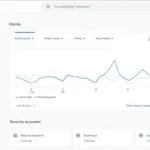Google Analytics 4 (GA4) is a powerful tool that uses a variety of algorithms to process and analyze user data. While the exact algorithms are proprietary, we can understand some of the core principles at work:
1. Machine Learning:
- Predictive Analytics: GA4 uses machine learning to predict future user behavior based on historical data. This helps businesses anticipate needs and tailor their strategies accordingly.
- Anomaly Detection: The platform can identify unusual patterns in data, such as sudden spikes or drops in traffic, which can signal issues or opportunities.
2. Data Modeling:
- Event-Based Attribution: GA4 shifts from a cookie-based to an event-based model, providing a more accurate view of the customer journey. This allows for more granular analysis of user interactions.
- Data Modeling: The system creates models that fill in gaps in data, such as when users clear their cookies or switch devices. This ensures a more complete picture of user behavior.
3. Data Aggregation and Processing:

- Real-Time Processing: GA4 can process data in real time, providing near-instantaneous insights into website or app performance.
- Data Aggregation: The platform aggregates data from various sources, including web, app, and offline data, to create a unified view of the customer.
4. Data Visualization:
- Customizable Reports: GA4 offers a wide range of customizable reports and visualizations, allowing users to explore data in different ways and uncover valuable insights.
Key Points to Remember:
- Event-Driven: GA4 is built around events, providing a more flexible and granular approach to data collection and analysis.
- Cross-Platform: It seamlessly tracks data across web and app platforms, offering a unified view of the customer journey.
- Privacy-Focused: GA4 incorporates privacy-enhancing features, such as data anonymization and user consent management.
While these are the fundamental algorithms, GA4’s capabilities are constantly evolving. Google regularly updates the platform with new features and improvements, leveraging the latest advancements in machine learning and data science.


